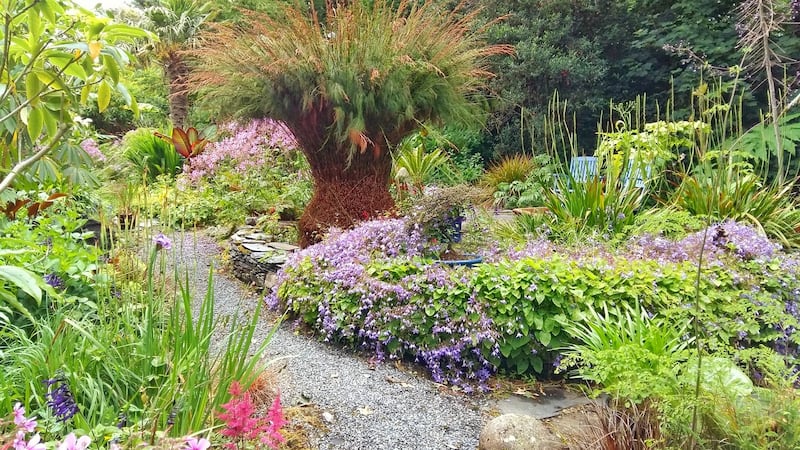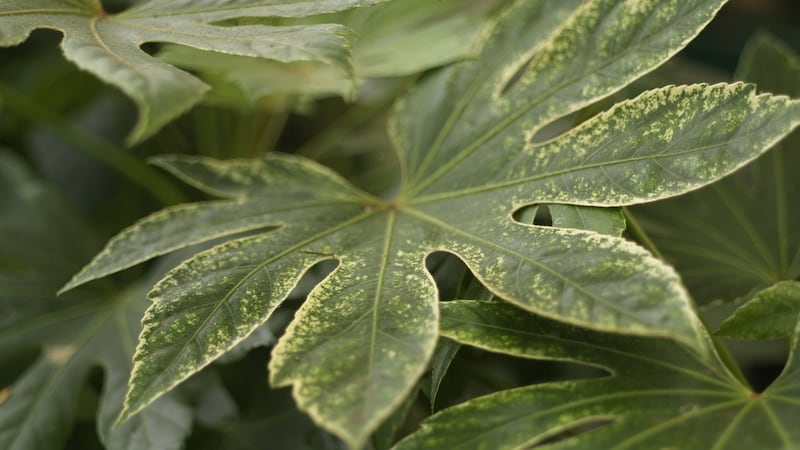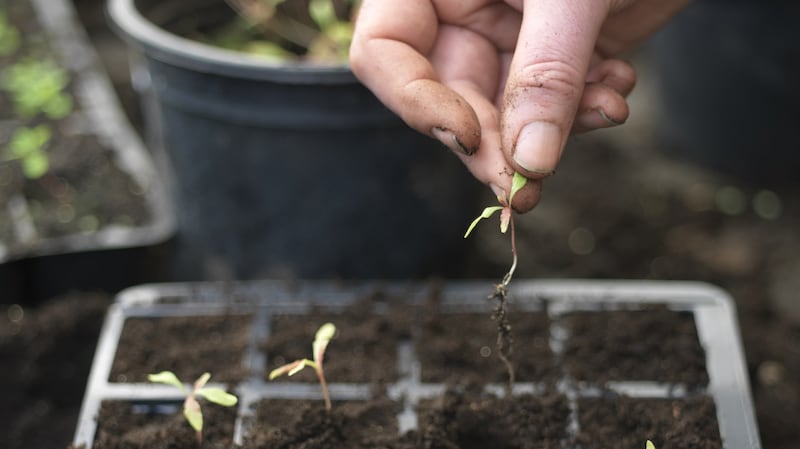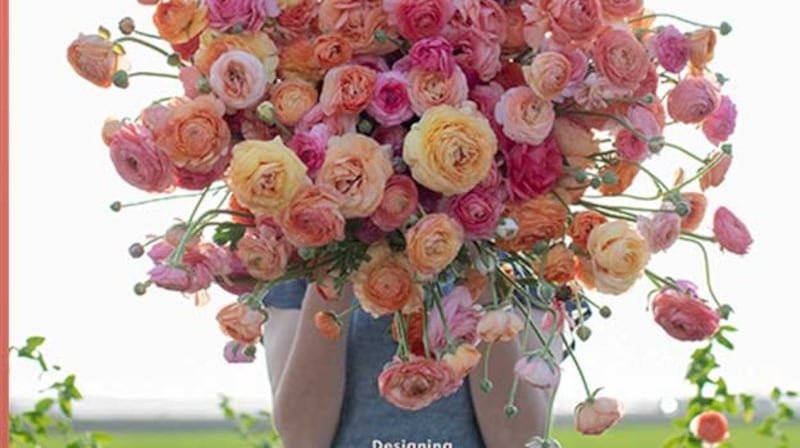There are times, surrounded by the gloomy, grey drip-drip of an endless Irish winter, when I wonder what it would be like to live in a country with an entirely different climate.
Thoughts of sultry heat, blue skies and brilliant sunshine dance across my mind along with dreams of balmy breezes and the sweet, vanilla-scented whiff of tropical blooms – until I remind myself, with a squeamish shudder, of the downsides. Weird plant pests and diseases, for example. Freakish weather events. The possibility of termites, typhoons and a monsoon season that would make our Irish rainfall seem pitiful by comparison.
Plus it’s not like we Irish gardeners can’t do “exotic”. Of course we can. Blessed with a generally mild, damp climate that allows those of us living in the milder, coastal parts of the country to grow a wonderfully wide range of tropical-style plants, we can quite easily recreate the sense of a lush Australian rainforest, a leafy Asian woodland or a sun-baked Mediterranean garden.
The secret lies in selecting species of plants with strong silhouettes and dramatically architectural foliage that are also capable of tolerating our less than tropical weather.
Classic examples include the Australian tree-fern (Dicksona antartica) with its tall, arching fronds and whiskery brown trunk; ornamental bamboos (but only the non-invasive, clump-forming kinds such as species of Fargesia, Chusquea and Himalayacalamus), spiky agaves, hardy palms including Trachycarpus fortunei and Chamaerops humilis, certain species of cordyline, handsome ornamental grasses such as hakonechloa, Stipa gigantea and Stipa tenuissima, varieties of the giant-leafed false castor oil plant (Fatsia japonica), sacred bamboo (Nandina domestica), the silver, spiky-leaved astelia and strappy-leaved phormiums.
All of these will cope with an average Irish winter so long as your garden isn’t a cold, wet one. All are also evergreen and quite happy to grow in a large pot or tub until very mature, giving them the potential to dramatically transform even the smallest and drabbest of courtyard gardens.
For best effect, choose plants with a variety of strongly contrasting leaf shapes and growth habits and – the golden rule of gardening – make sure to choose appropriately. So, for example, if your garden is a suntrap with fertile but free-draining soil, then select exotic-looking plants that love these kinds of growing conditions.
Examples include the Chusan palm, the strawberry tree (Arbutus unedo), the handsome architectural foliage shrub known as honey bush or Melianthus major, agaves (make sure to give these very sharp drainage and a sheltered , sunny spot), giant bugloss (Echium pininana) and the ultra-hardy, slow-growing Chinese evergreen magnolia (Magnolia delavayi) which is prized for its giant evergreen, glaucous leaves and fragrant white flowers.
Likewise, if it’s a shady, sheltered space with cool, moisture-retentive, humus-rich soil, then choose species that enjoy these conditions; examples include many species of ferns, the dwarf fan palm, acers, astelia and camellia.
That said, do bear in mind that one of the great advantages of container growing is that it allows even gardeners with very free-draining, alkaline soils to grow the many kinds of handsome specimen plants that demand a cool, humus-rich, neutral to acid soil. Examples include rhododendrons, azaleas, Japanese maples, tree ferns, cobra lilies (Arisaema) and leucothoe.

Container growing also allows us to grow a range of more tender or borderline-hardy, exotic-looking plants, including some species that deeply dislike our wet Irish winters. These can be kept under protective cover of a glasshouse, polytunnel or even in some cases a garden shed during the cold, damp winter and early spring months before being moved back outdoors again in early summer.
Examples include varieties of ornamental banana (Ensete ventricosum and Musa basjoo), the strange, fleshy, dark-leafed succulent known as Aeonium ‘Zwartkop’, Schefflera taiwaniana, pseudopanax, tropical-looking cannas and ginger lilies (Hedychium), all of which are perfect for jungle-themed gardens.
Available as pot-grown specimens from good garden centres in early summer, cannas and ginger lilies can also be purchased at this time of year as loose rhizomes (stockists include mrmiddleton.com). Pot these up and grow them on a bright, warm room or heated glasshouse/warm conservatory until late May, at which point these tender perennials can be hardened off and moved outdoors. Kept well-fed and watered, they will grow into magnificent plants with large, banana-like, colourful leaves and exotic flowers ideal for adding drama and a fizz of tropical heat to any garden.
Much like dahlias, if you want to treat them as perennials, then in all but the mildest gardens you’ll need to move their fleshy rhizomes back under cover come autumn. With container-grown plants, this is a simple matter of moving the pots into a frost-free shed.
Last but not least, don’t forget the transformative power of some species of half-hardy, fast-growing annuals, which can be used to quickly (and very affordably) give exotic colour and architectural foliage to a jungle-themed garden or courtyard. Examples include the morning glory vine (Ipomaea), a fast-growing, hugely decorative, short-lived climber that produces generous quantities of trumpet-shaped flowers throughout the summer months. Many varieties are available including some with violet-blue, white, magenta and chocolate-pink blooms.
Other examples include the vigorous cup-and-saucer vine (Cobaea scandens); black-eyed Susan (Thunbergia alata) and varieties of the dramatically architectural caster-oil plant (Ricinus communis). All will happily grow in containers and are easily propagated from seed sown under cover and with heat in April (recommended seed suppliers include Seedaholic. com).

Five great Irish gardens with exotic or tropical planting to visit this year:
1 Cluain na dTor Seaside Gardens and Nursery, Ballyconnell, Falcarragh, Co Donegal, seasideplants.eu
2 Kells Bay Gardens, Kells, Co Kerry, kellsbay.ie
3 Mount Stewart Gardens, Newtownards, Co Down, nationaltrust.org.uk
4 Hunting Brook Gardens, Blessington, Co Wicklow, huntingbrook.com
5 Blarney Castle Gardens, Blarney, Co Cork, blarneycastle.ie
This week in the garden:
Now is the time to tackle early weed growth in polytunnels/glasshouses before young seedlings get a chance to get established, using a sharp hoe to gently slice them down. For best results, this is best done on a warm, sunny day to discourage any possible regrowth. Always take great care when hoeing to avoid accidentally damaging the stems or roots of crops.

The arrival of March marks the beginning of the busy sowing season for Irish gardeners. So make sure you’ve stocked up on bags of good quality seed compost, plant labels, trays, vermiculite and an indelible, waterproof, fine-nibbed pen and labels. Bear in mind that most species germinate best when sown under cover and given bottom heat using an electric propagator (available from most good garden centres), or a heat mat (available to order from Cork-based fruithillfarm.com) or by being placed on the ground in a bright room with under-floor heating. Humidity and light will also often help to boost rates of germination, for which reason it’s a good idea to sow into containers with clear lids or covered with a clear plastic freezer bag. But always read the advice on the back of seed packets carefully as there are some species that require darkness or a period of chilling in a fridge to successfully germinate.

Read this:
The Washington-based flower-farmer florist Erin Benzakein whose first book Floret Farm's Cut Flower Garden was an instant international bestseller has just released her second book, Floret Farm's, A Year in Flowers: Designing Gorgeous Arrangements for Every Season, a lavishly illustrated and richly informative guide to creating a range of garden-inspired, seasonal, foam-free arrangements throughout the gardening year. From casual hand-tied posies to dramatic table centrepieces, there's something in this very beautiful publication to inspire all flower lovers (Chronicle Books £21.99).
Dates For Your Diary
Wednesday, March 4th (8pm), Wesley House, Dublin 2, RHSI Lecture "Field of Dreams" with the Tyrone-based gardener and author Bob Salisbury, admission free for RHSI members, non-members €10, rhsi.ie. Thursday, March 12th (8pm), Artane Beaumont Family Recreation Centre, Kilmore Road, Dublin 5, "Daffodils", a talk by Deirdre Cairns on behalf of Dublin Five Horticultural Society, admission €5, telephone 0872423020 for further details. Saturday, March 14th (from 10am), National Botanic Gardens, Glasnevin, Dublin 9, "Sustainable Gardening", RHSI Annual Seminar with guest speakers Alys Fowler, Nigel Dunnett and John Fitzgerald, tickets from €40 (horticultural students), €80 RHSI member, €100 for non-members, pre-booking essential, rhsi.ie












